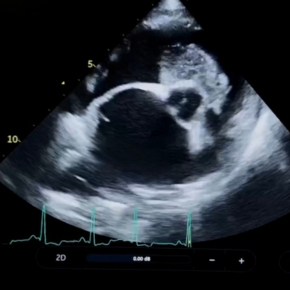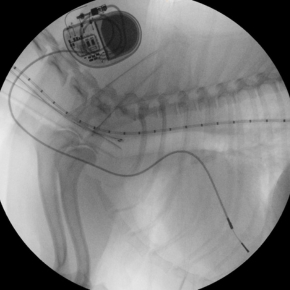
How pimobendan can change echocardiographic findings
Avoid misclassification of mitral valve disease in dogs receiving pimobendan

Pacemakers are lifesavers for many of our canine patients, and whilst the knee-jerk reaction is often to avoid future anaesthetic procedures altogether, you may be surprised to hear that it is more straightforward than you think. Below is a concise, step-by-step framework you can follow the next time a pacemaker patient lands on your surgical list.
Contact us for telemedicine or referral support
Has the pacemaker been fitted in the last 10 weeks? Unless it’s an emergency, postpone elective anaesthesia. During this “bedding-in” window the lead tip is still fibrosing into the right-ventricular endocardium and infection risk remains higher.
If a routine cardiology check-up is due, schedule it before the anaesthetic. We’ll confirm pacemaker battery status, capture thresholds and importantly – screen for any evolving structural disease that might require you to tweak your drug choices.
Fitting a pacemaker does not mean that patients cannot develop other structural cardiac disease such as degenerative mitral valve disease (DMVD) or other rhythm disturbances (such as atrial fibrillation). A focused echo to assess left-atrial size and systolic function will flag patients who may need an adjusted approach.
| Scenario | Premedication | Induction |
|---|---|---|
| Unsure of cardiac status/emergency | Opioid of your choice | Propofol or alfaxalone to effect, plus midazolam |
| Minimal or no structural disease | Acepromazine IV and opioid | Propofol or alfaxalone to effect |
| Documented structural disease | Opioid of your choice | Propofol or alfaxalone to effect |
Note: Alpha2 agonists (e.g. medetomidine) are best avoided; their vasoconstriction cannot be balanced by a reflex tachycardia.
If you’ve got a procedure for a pacemaker patient coming up, we would be happy to discuss it with you to help optimise your patient care. These patients are usually very stable (with a bit of forethought) and less hassle than you’d think!
Discuss your case with our team

Avoid misclassification of mitral valve disease in dogs receiving pimobendan

Understand how left atrial size can cause a cough in dogs with mitral valve disease in our article.